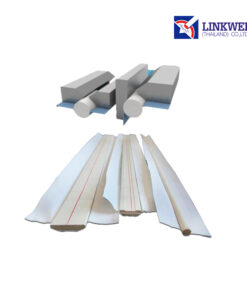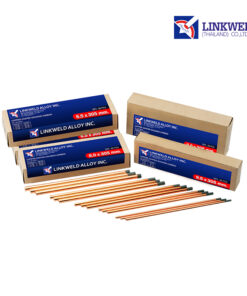Welding Tungsten Electrodes
Related products
Welding Consumables
Characteristics: The weld metal of LKE-309L contains more Cr, Ni than LKE-308L. The microstructure containing suitable quantity of ferrite, gives it an excellent resistance to hot cracking. It is suitable for welding of dissimilar metals, hardening alloy steel and steel with poor weldability. Applications: It is suitable for welding of stainless steel piping in refineries
Welding Consumables
Characteristics: LKE-309MoL is a rutile electrode use as a buffer layer in welding acid resisting clad steels. With crack resistance and corrosion resistance at the high temperature due to higher Mo content. Applications: It is suitable for dissimilar metal welding of joining mild steel to stainless steel and steels difficult to weld. Notes on Usage:
Welding Consumables
Characteristics: LINKWELD MIG Aluminium Wires It is a silicon-alloyed aluminum. It is suitable for welding base metal 3003, 3004, 5052, 6061, 6063 and casting alloys 43, 355, 356 and 214. Classification: AWS A5.10 ER4043 Typical chemical composition of weld metal (wt%) Si Mn Zn Fe Al 5.0 0.02 0.05 0.20 Bal Typical mechanical properties of
Welding Consumables
Linkweld stainless steel cleaner is a gel-type chemical applied with a brush to descale the heavy weld. It removes discolorations heat welding area caused due to heat evolution during welding. Can clean 90 – 100 meters of weld seams in 1 kg of gel Properties – easily use – descale from welding – remove discolorations
Welding Consumables
Specification: High metal removal rate Excellent arc stability Low electrical resistant Uniform diameter Suitable for gouging on Steel, Stainless steel, Cast iron and Copper.
Welding Consumables
Characteristics: LKT-347 is a niobium-bearing rutile electrode for Ti and Nb stabilized 18Cr-8Ni steels. Good intergranular corrosion resistance and heat resistance can be obtained due to its Nb content.It is use for AISI 347, 321, 304L steels. Applications: It is suitable for welding of stainless steel piping, boiler and gas turbine. Notes on Usage: 1.Dry










